

CLUB
THIS BREAKFAST IS ON A ROLL!
It’s a sad fact that many children come to school without breakfast – and we know what a difference a good breakfast makes. Without food in their stomachs, concentration slips, behaviour can worsen and energy levels drop before the first lesson even begins.
The cost-of-living crisis means more families than ever are struggling to provide nutritious meals. According to the Food Standards Agency, nearly 1 in 4 UK households (24%) are now food insecure with 31% of those having children under 16.**
That’s where breakfast clubs come in
They reduce child hunger, help children get to school on time and give pupils the energy to learn. Plus, with the government’s long-term focus on childcare, launching a breakfast club now could benefit the school, its families and wider community in the years ahead.

Like every child is different, every school has its own challenges, so whether you’re feeding 10 or 100 children, facing equipment shortages, or working with tight budgets, this guide is here to help you make breakfast count.
THE BENEFITS OF BREAKFAST CLUBS FOR PUPILS, PARENTS AND SCHOOLS
Breakfast clubs offer a wide range of benefits that positively impact pupils, parents and schools alike.
• Provide pupils and staff with a nutritious, balanced start to the day.
• Improve concentration, punctuality, behaviour and classroom readiness.
• Improve attendance and timekeeping for pupils.
• Encourage healthy eating habits from an early age.
• Support learning and social development through enrichment and routine.
• Help low-income families by offering free or low-cost meals.
CONTENTS
• Offer affordable, flexible childcare for working parents.
• Create inclusive, stigma-free environments where all pupils feel welcome and have a sense of pride when they participate.
• Promote a calm, settled start to the school day and opportunities for children to sit, eat, and talk together.
• Offer valuable social time – for some, it may be the only shared meal of the day.
• Enable staff, including teaching assistants or kitchen teams to connect more closely with children outside of class.
• Can contribute to increasing a school’s income.
TOP TIP
Involve parents and volunteers in running the club it helps build stronger school communities.
Serve Up Breakfast Ways You Can
There’s no one-size-fits-all. Here are five models that cater to different school setups:
1. Breakfast Clubs: Running before the school day, breakfast clubs offer food, childcare and activities in a safe, social setting. Ideally, they are free for all to avoid stigma, although priority should be given to vulnerable pupils.
2. Canteen Breakfasts: Often integrated into existing setups, this model provides free, nutritious food to all pupils through the school canteen.
3. Classroom Breakfasts: Breakfast is served in the classroom before or at the start of the school day. This works well in schools with a soft start, allowing pupils to eat while reading or completing morning tasks.
4. Grab and Go: Pupils collect breakfast items on arrival, typically at accessible points like the school gate or playground. This flexible model can complement other breakfast offerings.
5. Breakfast for Late Arrivals: Simple solutions - such as a basket of bakery items at the sign-in desk - ensure latecomers don’t miss out.
ADDITIONAL CONSIDERATIONS
Breakfast is usually served in dining areas, although special needs schools often prefer classrooms. Clubs are typically staffed by teaching assistants, catering teams, volunteers or dedicated staff, with teachers more involved in special needs settings.
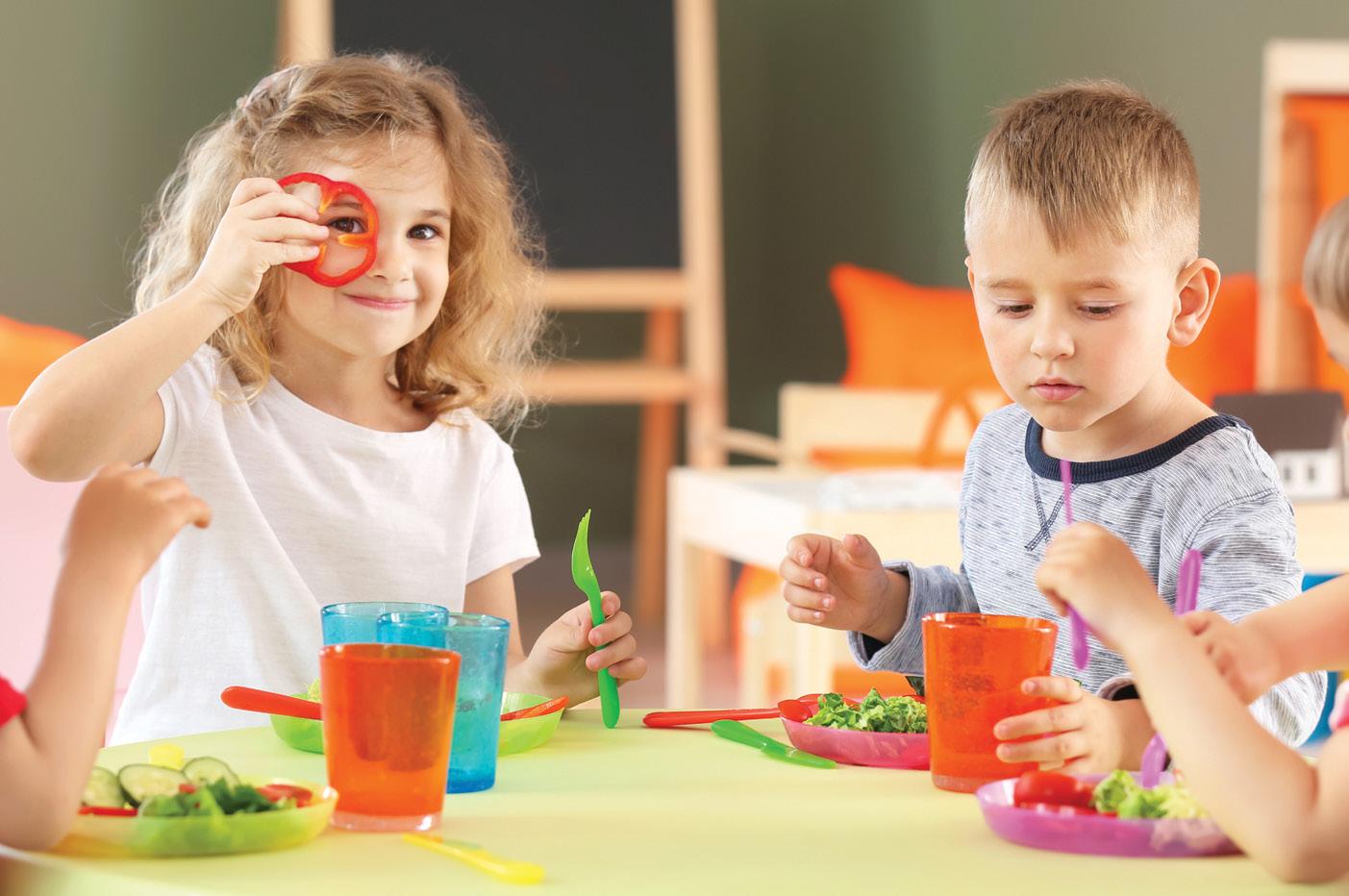
TOP TIP
Let students help with setup, basic food preparation or offering simple, supervised tasks – it boosts ownership and teaches responsibility.
However you serve breakfast, it must meet the School Food Standards – they apply throughout the whole school day. These standards help children develop healthy habits, stay energised and enjoy tasty, balanced meals.
To make sure your breakfast hits the mark, work closely with your kitchen team or head chef.
HERE’S A QUICK GUIDE TO WHAT TO INCLUDE:
Starchy foods (daily):
Choose whole grain bread and bagels where possible and opt for lower-sugar, high-fibre cereals such as whole grain flakes or shredded wheat-style options. Avoid sugar-coated cereals.
Dairy (daily):
Choose plain milk and yogurts. You could add fresh or frozen fruit to natural yogurt for extra flavour. School Food Standards recommend that a portion of cheese for a primary school pupil is 20-30g and to try to avoid making it the primary source of vegetarian protein across the week.
Fruit & veg (daily):
Fresh fruit should be given every day. Bananas, apple slices, berries, melon and vegetables like tomato slices, cucumber and carrot sticks are popular.

Protein (weekly):
Eggs and homemade baked beans are great sources.
Drinks:
Stick to water – avoid fruit juices, even if 100%.
THE BASICS OF A GREAT BREAKFAST CLUB
A successful breakfast club sets a positive tone for the school day. It's not just about the food – it's about creating a welcoming, inclusive space where children can start their day feeling calm, nourished and ready to learn.
Below are some helpful do’s and don’ts to guide your setup:
AVOID: DO:
Use colourful tablecloths to brighten the space.
Offer variety and display the menu clearly.
Include allergy-friendly options to ensure inclusivity.
Choose wholemeal bread to add more fibre easily.
Offer low-sugar cereals like plain flakes, puffed rice, or porridge oats.
Use portion guidance (e.g. 30g = 1 serving of cereal).
Make breakfast engaging –gadgets like waffle makers can be a fun touch.
Appoint a staff member or pupil as ‘Head of Breakfast’ for ownership.
Plan your menu – it helps with ordering and reduces waste.
High sugar items (over 5g per portion).
Pre-flavoured yoghurts and sweetened cereals.
Pastries, cakes, or deep-fried foods.
Processed meats and high-sugar spreads.
Confectionery, including chocolate, cereal bars and syrup.
FRESH, ONSITE BREAKFAST PREPARATION:
If your kitchen team is involved in breakfast service, they can rotate hot options such as waffles, toasties, omelettes and muffins alongside daily fruit and cereal.
• Reuse leftover salad items in toasties or omelettes.
• Add oats and seeds to cake mix for nutritious muffins.
• Soak oats overnight for quick cold dishes or creamy porridge.
• Freeze muffins in batches to save prep time.
• Use leftover fruit in pancakes or muffins.
• Keep fruit prep simple – no peeling needed! Serve watermelon wedges, orange quarters or banana halves.
With the right planning and creativity, breakfast clubs can be a highlight of the school day!
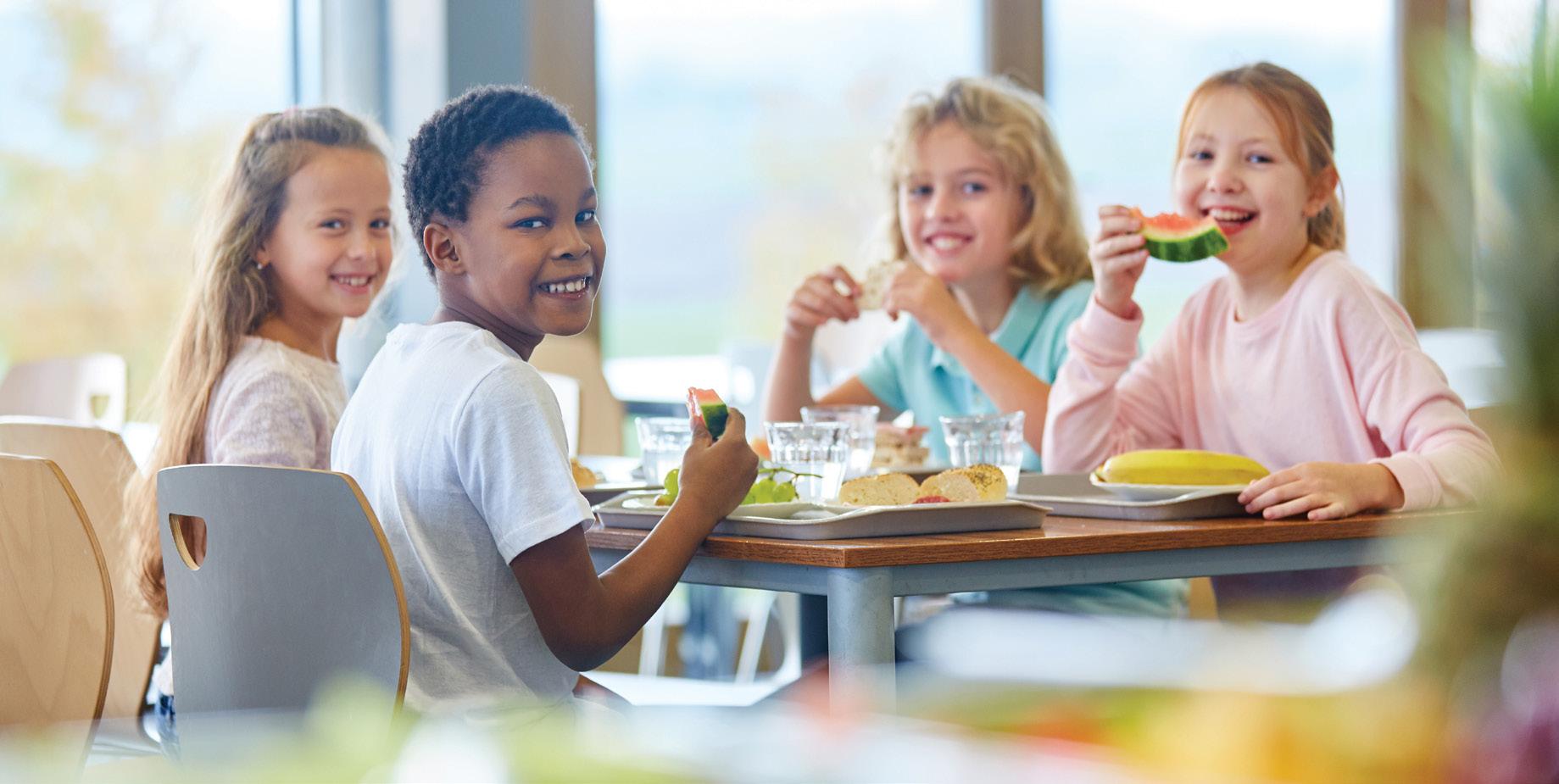
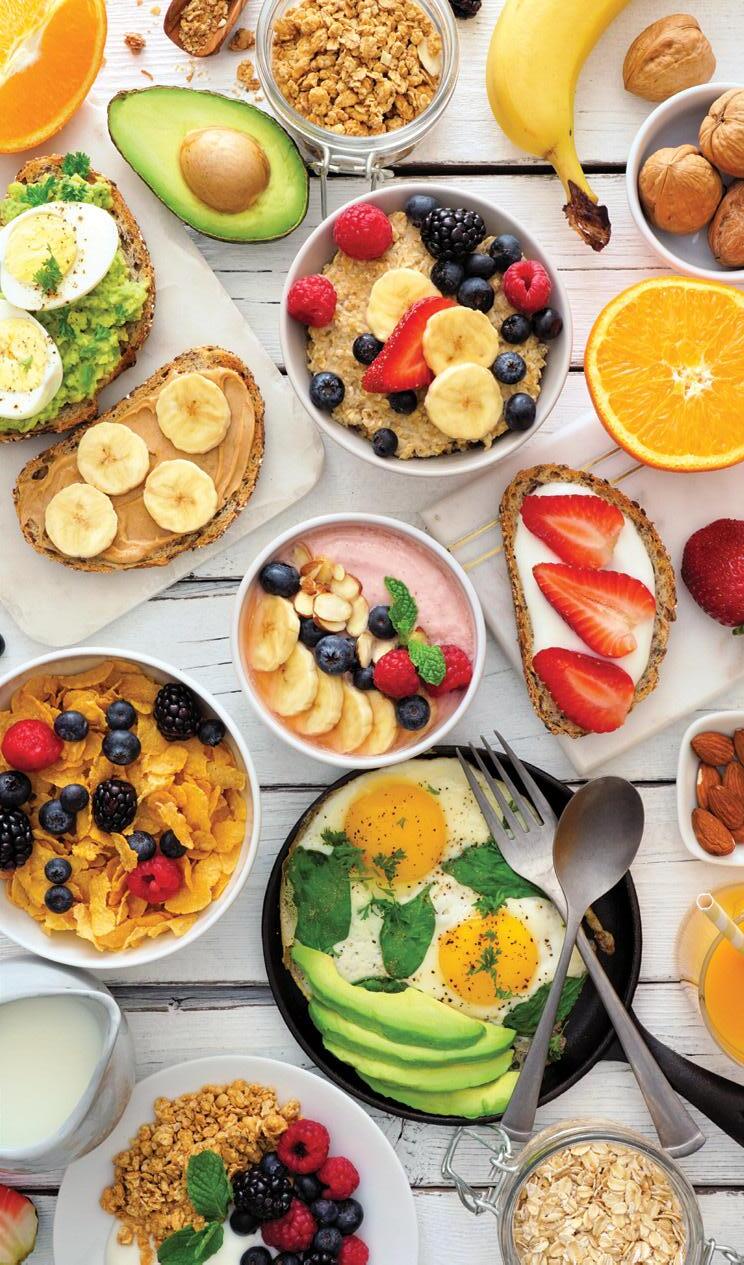
KEY TAKEAWAYS:
• Always include whole grains, fruit, dairy and a protein source.
• Encourage your kitchen team to prepare lower sugar options like jams, muffins, granola or overnight oats.
• Offer only water and milk to drink.
• Serve dried fruit with meals, not as snacks.
• Use serving tools to manage portions easily and consistently.


GET STUDENTS INVOLVED
Involving students in your breakfast club is a great way to boost engagement and encourage ownership. It helps them explore their food preferences, learn to taste confidently and feel more connected to the club
Offering variety and giving students a voice in what’s served can improve attendance and keep them coming back. Here are some great ideas on how you can get pupils involved:
Get creative:
Let students name the breakfast club or the days on the menu.
Try new things:
Encourage them to taste different breakfasts by giving out certificates or using a stamp card for trying something new.
Student roles:
Appoint older pupils as breakfast club monitors, they can help prep, set up, serve or tidy away.
Fun challenges:
Try activities like “eat the rainbow” with different coloured fruits or vegetables each week.
Hands-on help:
Give older students simple prep tasks like slicing fruit, spreading toast or measuring cereal.
Positive language:
Teach students to say “it’s not my favourite” rather than “eww” to avoid influencing others negatively.
Student involvement makes breakfast clubs more fun, inclusive and meaningful for everyone!
Omelette Muffins
A fun, low-prep way to get pupils involved! This easy-to-set-up station lets children customise their breakfasts, reducing waste by using leftover salad or veg from lunch. It’s quick, flexible, and simple to adapt with the seasons.
SERVES 5
INGREDIENTS
• 5 eggs, beaten
• 200g vegetables
• 100g grated cheese
• Margarine: to grease
• Salt and pepper: to taste
METHOD
1. You will need a deep muffin tray for this recipe.
2. In a mixing bowl, beat the eggs and season to taste.
3. Grease the inside of the muffin moulds with margarine.
4. Add chosen vegetables (e.g., onion, tomato, carrot, peas, corn).
5. Sprinkle lightly with some grated cheese.
6. Fill the muffin tins with the whisked egg 2/3 full.
7. Place in the oven at 180˚C until the eggs are puffed up and cooked through.
8. Remove from the moulds and serve immediately.

TABLETOP BREAKFAST STATIONS: FUN, FLEXIBLE & INTERACTIVE
Tabletop stations are a great way to make breakfast interactive, self-serve, and exciting for pupils. By transforming tables into mini kitchen hubs, students can get involved in choosing their own toppings and building their breakfasts – encouraging independence, healthy choices and a sense of ownership. This setup works with a mix of hot and cold options and can be run by anyone with basic kitchen skills. Keep the kit on a trolley for easy movement and storage or involve your kitchen team to take the breakfast flavours up a notch!
TOP TIP
These stations make breakfast fun, reduce food waste and help pupils try new, healthy foods in a relaxed setting.
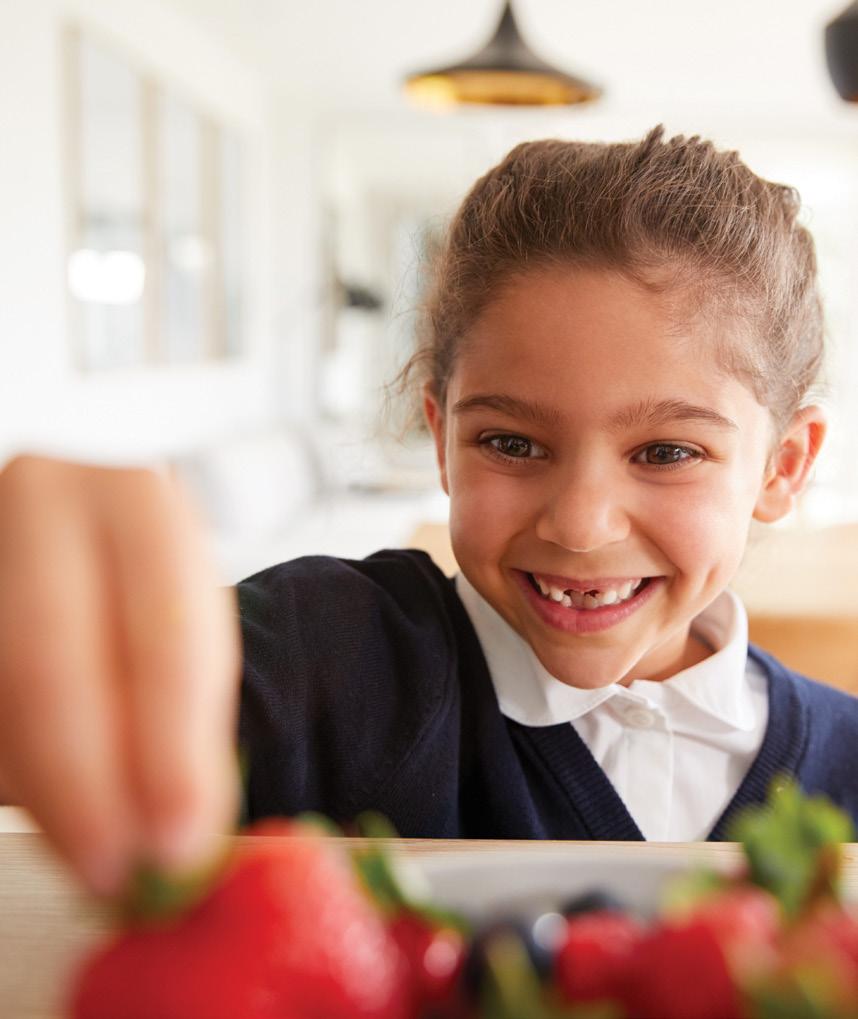
BAGEL OR TOAST BAR
Offer a variety of hot and cold toppings, including dairy-free options like tahini or hummus. Involve your kitchen team if possible to prepare extras like scrambled eggs or baked beans.
Variety keeps breakfast exciting and encourages pupils to try new foods! Topping ideas you could include are:
Cream cheese, low-sugar jam, marmite, avocado, tomato, cucumber, banana, berries, grated carrot or cheese and apple slices.
PORRIDGE STATION
Heat the porridge before prepping fruit – using an induction hob, microwave or with help from the kitchen team – then serve portions and let pupils add their own toppings like fruit, seeds, or a small drizzle of honey.
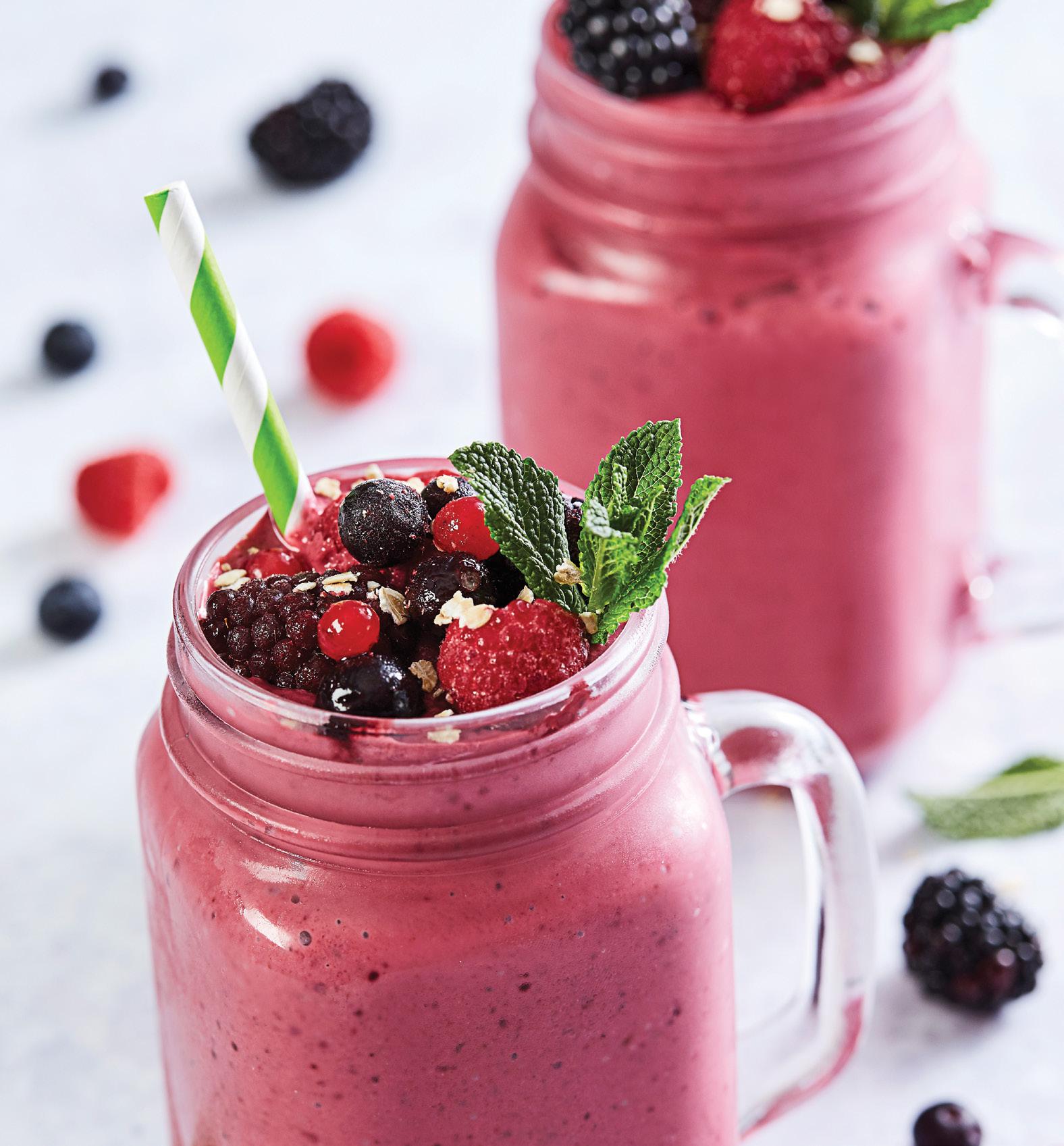
TOASTIE BAR
Set up a toastie maker with bowls of fillings and let pupils choose two toppings to create their own delicious combination.
WAFFLE STATION
A great way to include veggies at breakfast is by blending seasonal or leftover vegetables into the waffle batter, which can be prepared the day before to save time.
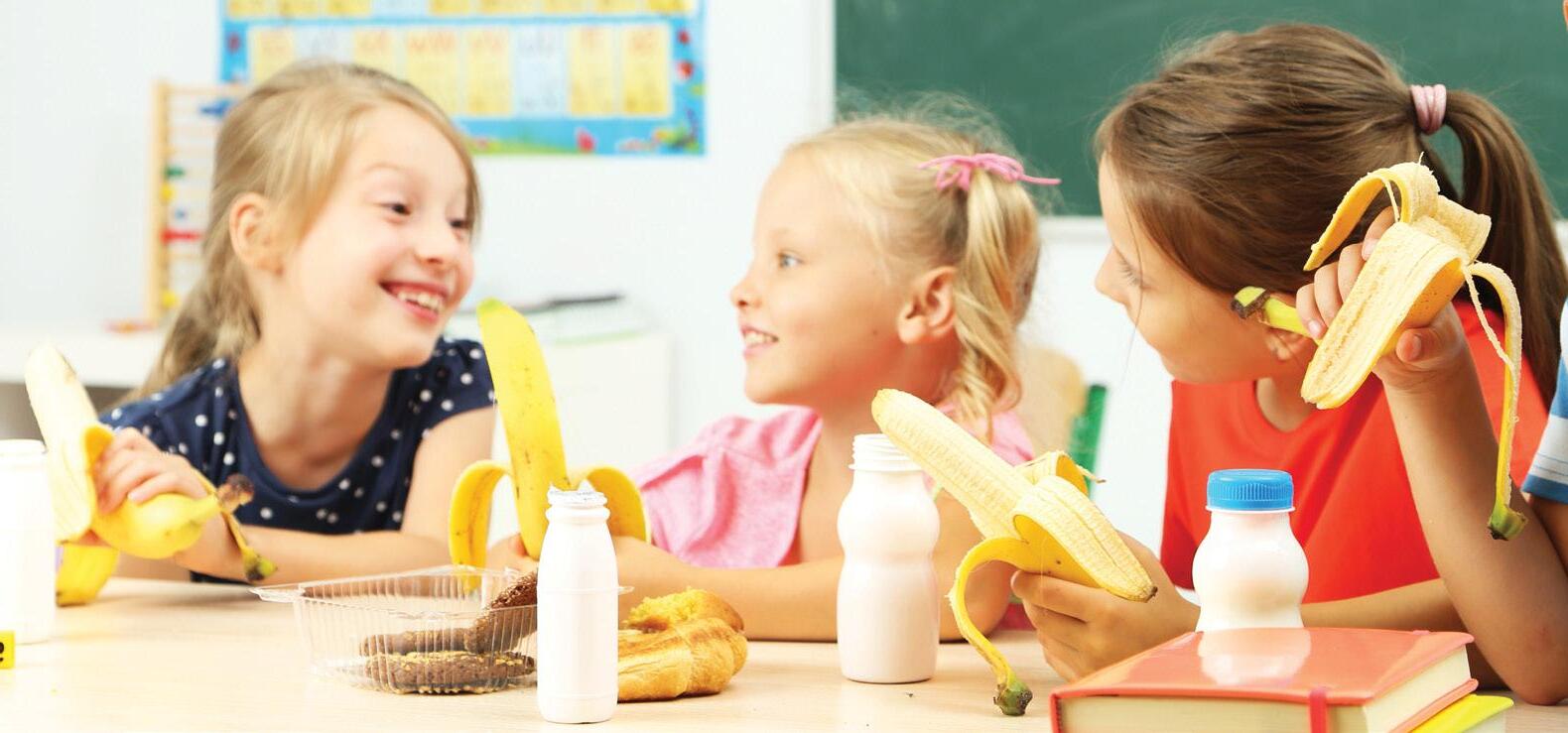

GRAB & GO BREAKFAST:
QUICK, FLEXIBLE & NUTRITIOUS TOP TIP
Grab & Go is one of the simplest ways to run a school breakfast, ideal for busy mornings and minimal setup. Designed for maximum flexibility, it can be served almost anywhere: classrooms, hallways, sports halls or even the playground. It’s typically a cold, self-serve option that anyone can manage, regardless of kitchen experience.
While no cooking is required, kitchen teams can support by preparing items like boiled eggs, overnight oats, muffins or breakfast bars in advance to boost nutrition and variety.
MENU IDEAS INCLUDE:
• Sliced fresh fruit (served daily)
• Low-sugar cereals
• Overnight oats
• Yoghurt (plain or low sugar)
• Pre-made muffins or breakfast bars
TIPS FOR SETTING UP YOUR GRAB AND GO BREAKFAST:
• Keep essentials like cereal dispensers and serving utensils on a trolley for easy transport.
• Display sliced fruit on trays, there’s no need to peel it. Just cut into easy-to-eat portions.
• A cereal station can be set up on a table or counter. For younger pupils, staff or volunteers can serve the milk and cereal; older pupils can self-serve with portion guidance.
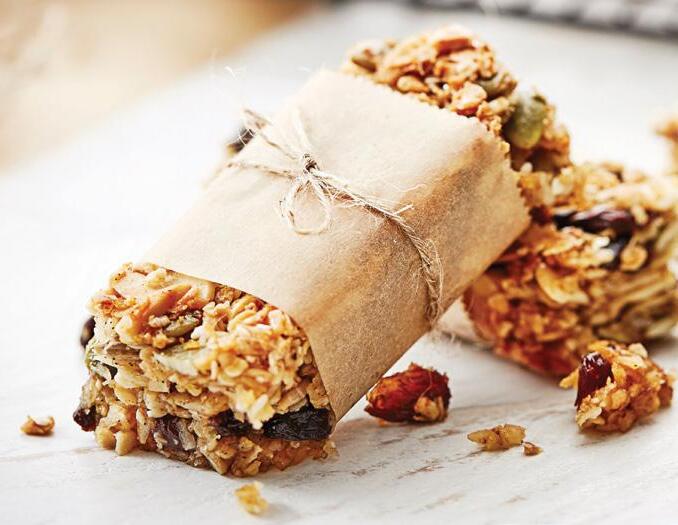
Granola Bars
If children ask for seconds, offer fruit, toast or yoghurtnot more cereal.

SEASONAL INSPIRATION FOR BREAKFAST CLUBS
Keeping breakfast clubs fun, exciting and in tune with the school year helps boost engagement and attendance. By linking your menu or activities to seasons, school events, or curriculum themes, you can create memorable moments that make breakfast a highlight of the day.

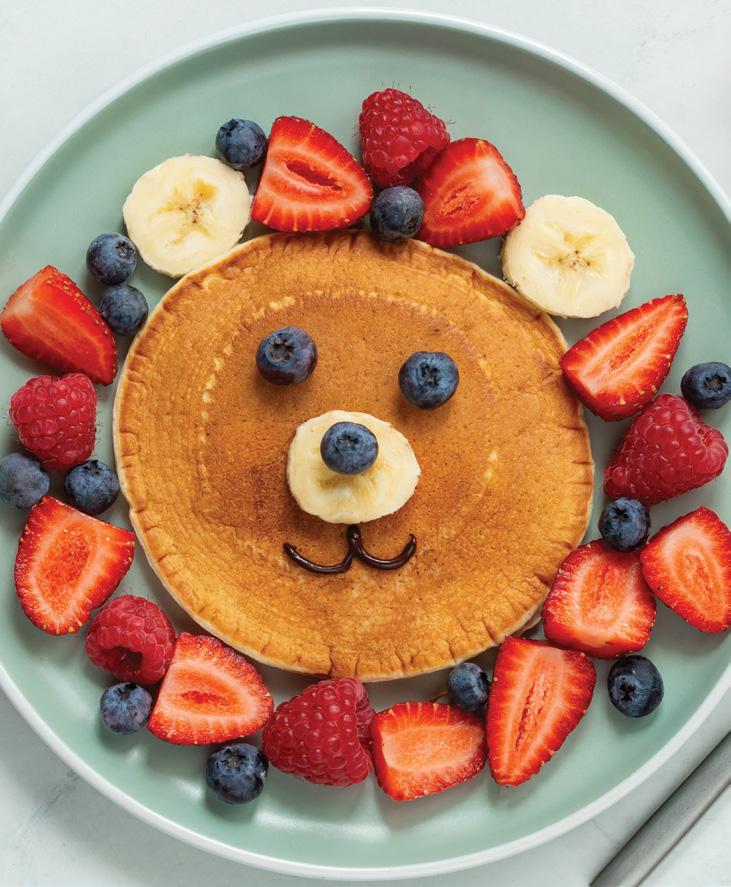
SIMPLE IDEAS TO TRY:
• World Book Day: Host a “Breakfast with a Book” morning. Why not serve themed foods like Dr Seuss “Green Eggs and Ham” or fruit inspired by The Very Hungry Caterpillar.
• Strawberry Season (June–Sept): Add fresh strawberries to your breakfast menu. Run a craft activity where children paint plant pots to look like strawberries, then grow real ones at home or school. Once ripe, the strawberries can be used for breakfast!
• Halloween: Add some spooky fun to breakfast with themed foods like “Boo-nanas” or ghost-shaped toast.
• Pancake Day: Let children decorate their own pancakes with fruit toppings or yogurt.
• Sports Day: Offer high-energy options like protein-packed toasties, fruit smoothies or overnight oats to fuel busy bodies.
Simple seasonal tweaks keep breakfast clubs fresh, fun and connected to the wider school experience.
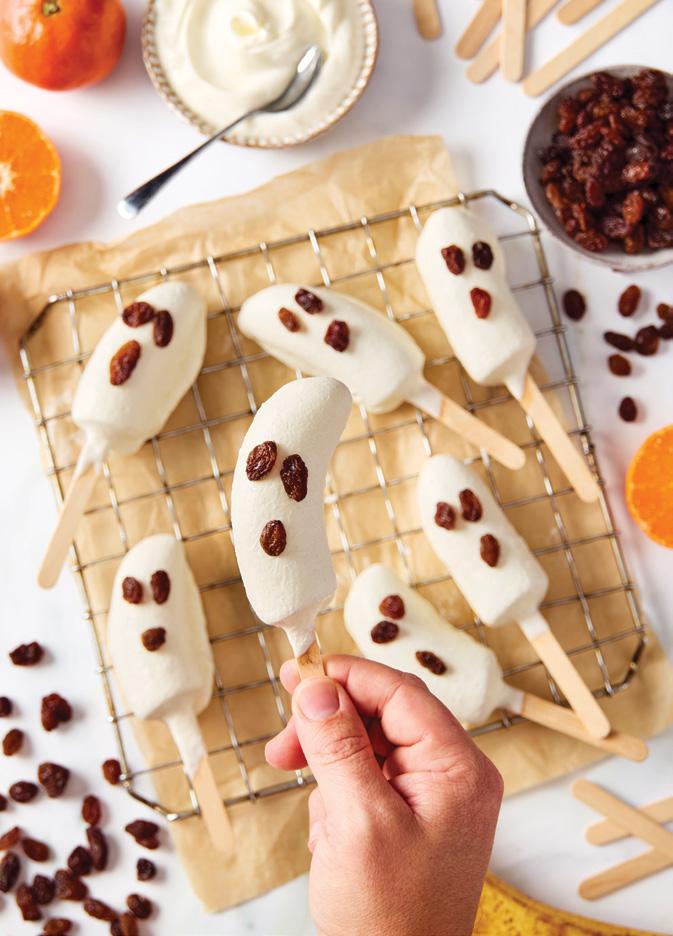
-Nana-
An easy to make treat for a fun Halloween themed breakfast! Get creative with the toppings, you could use desiccated / shredded coconut.
SERVES 1
INGREDIENTS
• one half banana per child
• a few pots of yoghurt (Greek, natural, it’s your choice)
• a handful of raisins / currants
• blunt wooden skewers or ice-lolly sticks
METHOD
1. Cut the banana in half.
2. Push the skewer through the half banana.
3. Spread the yoghurt over the banana.
4. Add two currants as ghostly eyes.
5. Freeze until firm.
6. Enjoy!
www.stiritupmagazine.co.uk
foodservice.afblakemore.net
